Honor Award
Paths of Life- Rethink the Relationship Between Different Agriculture Landscapes and Community Life
Yitian Zhao, Student ASLA and Siyu Tian, Student ASLA, Graduate, University of Pennsylvannia
Faculty Advisors: Laurie D. Olin, FASLA; Tony Atkin; Gavin Riggall and Kathy Martin
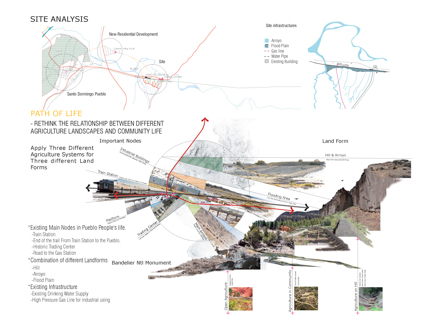
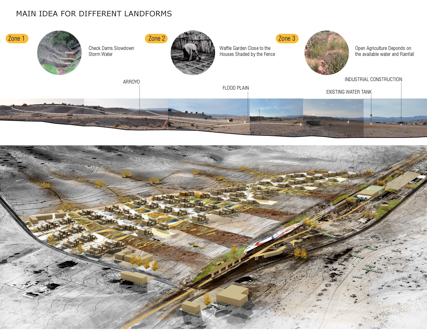 Close Me!
Close Me!Main idea for different landforms
Download Hi-Res ImageImage: Yitian Zhao and Siyu Tian
Image 2 of 13
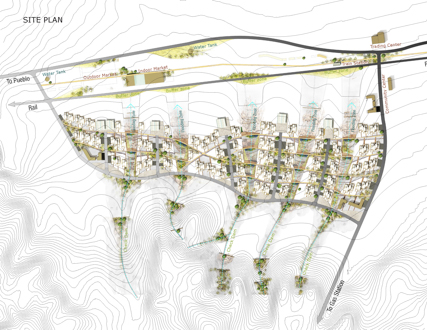
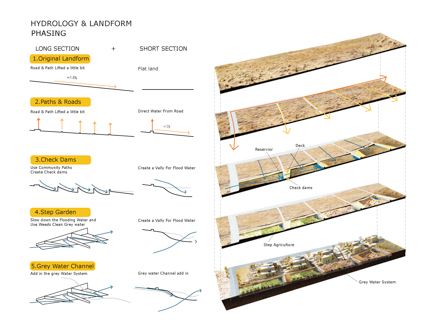
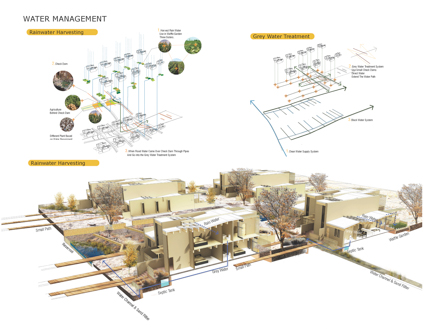
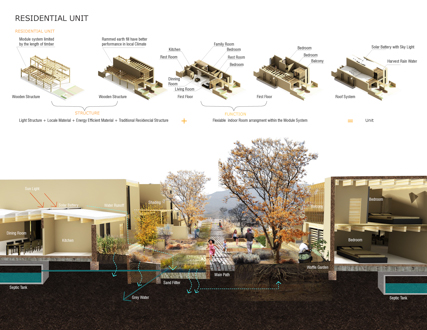
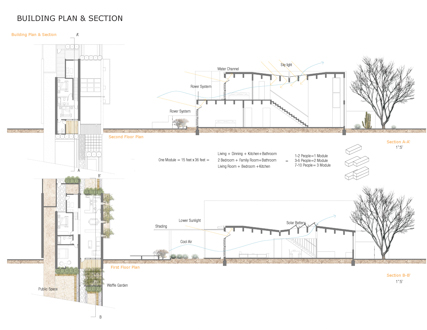
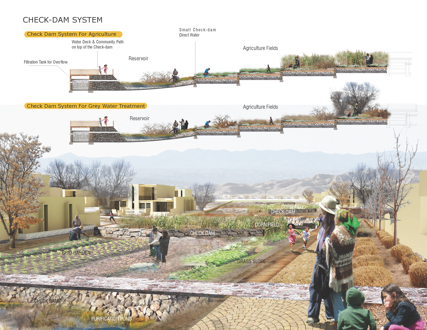
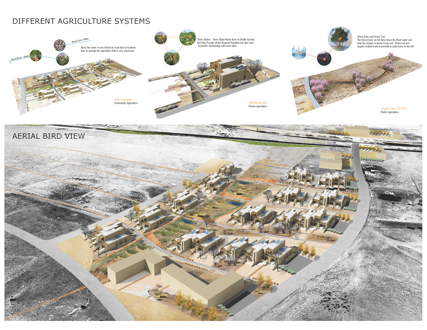
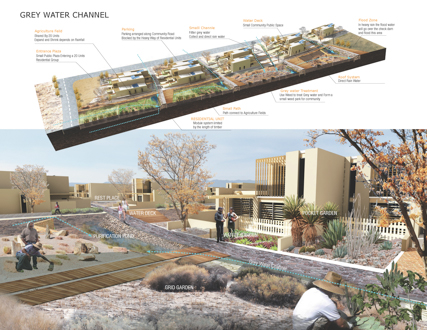
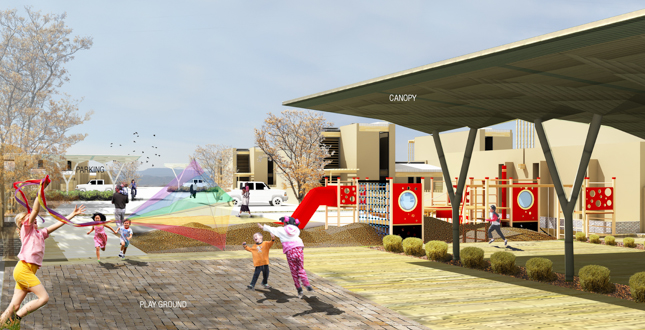
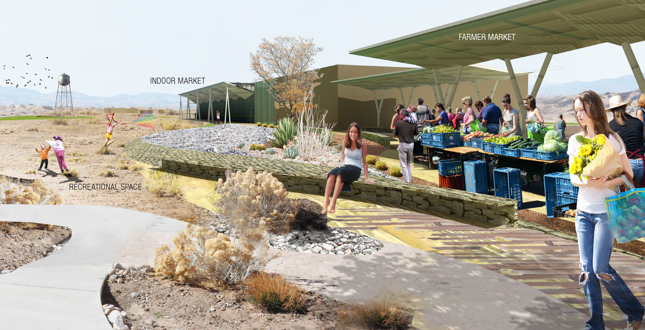 Close Me!
Close Me!Waste industrial field recreation
Download Hi-Res ImageImage: Yitian Zhao and Siyu Tian
Image 12 of 13
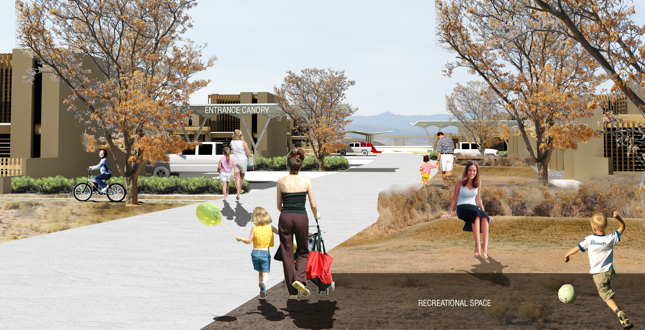
Project Statement
Because of the very unique climate and landform in New Mexico, the traditional pueblo life style is deeply relying on the understanding and exploiting of local landscape. However, contemporary residential development in this area is somehow ignored such kind of relationship. This project rethought and applied the traditional understanding of agriculture landscape into the contemporary residential development design.
Project Narrative
Site Assets
This program is a new residential development of 250 residential units for Santo Domingo pueblo people. The site is near the historic local trading center and the train station, and between two existing infrastructure lines: the drinking water line and the high pressure gas line. As one of the existing important transit for the Pueblo people there will be a new trail connect the rail station to the Pueblo.
Besides all the advantages of the site, there are also some major problems. The area closer to the rail will be flooded due to the inefficient draining system to the main arroyo. Also, the site does not have any sewer system, and the railway station need a new restroom for passages.
Goal
Create a modern Pueblo community use traditional pueblo agriculture system and storm-water management methods.
Approaches
Landform and Agriculture Type
Based on the research of local agriculture systems, the site can be divided into three different kinds of landforms. The first is small hills on the north. The second is the flat area close to the rail. The third is the big arroyo on the north of the site.
Compare the site to the historic residential plots in Bandelier National Monument, although the soil conditions are totally different, the landforms still have some similarities. Therefore, the three different zones can also be matched to the different traditional agriculture methods as in the Bandelier. On the top of the mountain there are check-dams slow down the storm water and keep the soil moist with plenty sediment to grow relatively larger plants such as peach trees. In the middle there are waffle gardens in front of the houses. And the area closer to the major arroyos, the agriculture is more open and merged into the natural landscape.
Storm Water Management
The different agriculture systems are also related to the traditional storm water management methods. The check-dams on the hill slow down the storm water. However, because the rain will be as rush as six to seven inches in forty minutes, the area close to the rail may be flooded during the heavy rain. Meanwhile, in most time of the year the climate is very dry, so keeping as much water as possible for plants is another challenge. Create a water channel to direct the storm water from the building units and collect the rain water in front of the small check dams for irrigation.
Also, the storm water go over the check-dam during the heavy rain, and the landscape in the flooding zone can slow down the storm water and absorb superfluous water.
Wooden Structure Module and Big Family
The Pueblo families usually contain as many as 10 peoples. Large family structure requires more flexible interior space of a unit to meet different needs. Also, the differences in temperature between day and night, summer and winter is great, and that requires the material to have high repellence and can keep the interior temperature relatively stable.
Use wooden structure and filled in with rammed earth. Light structure is easy to be built and rammed earth has perfect performance in such kind of climate. Based on the limits of wooden structure, build a system formed by 15 feet * 36 feet modules, which can offer a house for as less as one or two people, or as many as 10 people, and have large flexibility in interior arrangement.
Besides, the folding roof harvest the rain water to irrigate the waffle garden and director the rain water into the major channels.
Grey Water Treatment and Open Space System
Though there are basic infrastructures in this site, there is no sewer system. Instead of building a usually sewer system to deal with both the grey water and the black water, changing the grey water treat system into a public landscape system for the community. The grey water will first be purified in the tank under each house, then the grey water will enter the channel and be treated by the weeds in the channel. The channel works as a green fence between the public spaces to the private front yard of each house.
In add to the storm water management system, the lower check-dams will work as the grey water treatment system.
Small Residential Groups and Community Squares
Since the agriculture system relate with the water management system and arrange along the existing arroyo, the whole development can be divided into five small groups around the five existing arroyos. And between each community there will be a community road. At the end of each road, there will be paved open spaces as connection among the small residential groups.
Also, from the existing roads to the gas station, the development can also be separated to several phases based on the arroyos.




